This Blu-ray from Radiance Films is currently available for purchase.
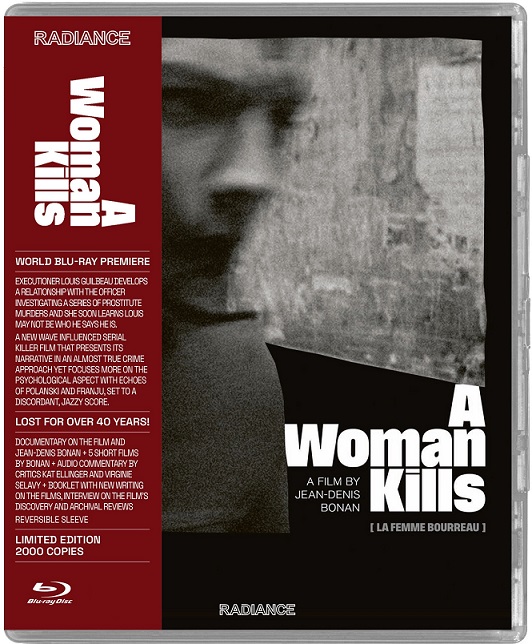
Over the years, I’ve reviewed many Blu-rays under the “Blasts from the Past!” banner. This article about an older film is something of an oddity. By definition, it is from the past, but this title has never been seen by the public until very recently. A Woman Kills aka La Femme Bourreau is a very interesting French production. It’s a combination of arthouse cinema and exploitation movie that couldn’t find a distributor when it was produced and disappeared. In 2010, the rough assembly was recovered and screened in Paris to enthusiastic response. After this preview and a few tweaks, the project was finally completed and found a distributor. Now, after more than 50 years since it was shot, it is being released on Blu-ray by Radiance Films.
Truth be told, the story of how it was lost is just as interesting as the movie itself. Writer/director Jean-Denis Bonan got his start capturing newsreel footage for the cinema and helped create a collective called the A.R.C. (Atelier de Recherche Cinématographique). Much of his early work consisted of capturing images of left-wing student protests against the government. Soon, he also began producing short films.
One of these titles earned a great deal of attention during its premiere. Tristesses des anthropophages (1966) aka Sadness of the anthropophagi generated buzz and shocked some viewers before being banned by film censors. Not only did they disallow the short from ever being screened in France, but they also prevented it from being exported to other countries. Undaunted and encouraged by the positive responses it had received, Bonan started work on an independent, self-financed feature. This became A Woman Kills and it was filmed during a series of riots and civil unrest in Paris. He and his crew would shoot their narrative during the day on 16mm stock, and then capture footage of violent confrontations between citizens and police in the evenings.
As mentioned, many were taken by the images Bonan created and some in the industry paid for a rough assembly of the film so that it might find a willing distributor. Alas, no one would release the project. The movie was an unusual hybrid and featured no stars. Essentially, no one thought they could sell it to the public (the situation wasn’t helped by the fact that the creator’s most famous work had been banned) and so the movie was never completed. Instead, it literally sat on a shelf for decades.
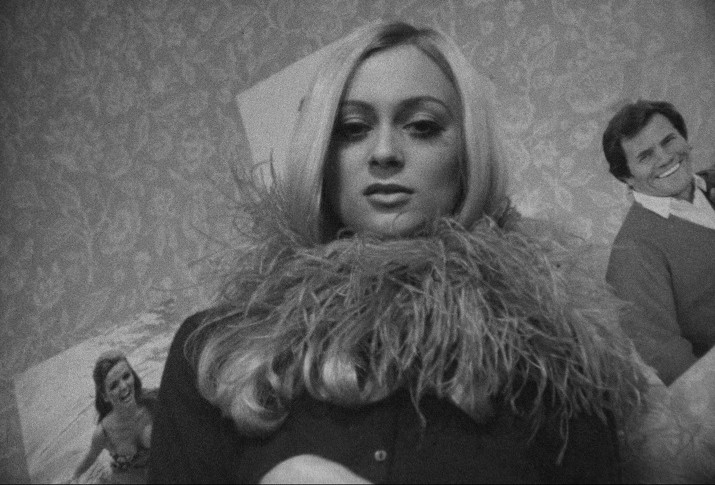
So, what is it all about? Narrated like a police procedural, an unseen figure explains that female serial killer Hélène Picard has just been executed for a series of brutal slayings of women that had terrorized citizens of Paris. The story focuses on Louis Guilbeau (Claude Merlin), her executioner who has hidden psychological issues. As it turns out, childhood trauma and his career causes his mind to snap. He immediately begins dressing as a woman and commits his own string of murders involving prostitutes, all carried out in a manner similar to Hélène Picard. Coincidentally, Louis’ girlfriend, police detective Solange Lebas (Solange Pradel), is assigned to track down the responsible party. She connects the dots quickly and pursues her boyfriend through the streets of Paris in order to deliver justice.
At 70 minutes, it’s a short movie that could have done with further background and character development. Indeed, the strange combination of droning voice-over, further narration by Louis himself, light exchanges between the central character and Solange, as well as some graphic murders is strange to behold. Regardless, the movie is well-paced, has lots of interesting subtext and there are plenty of striking images on display.
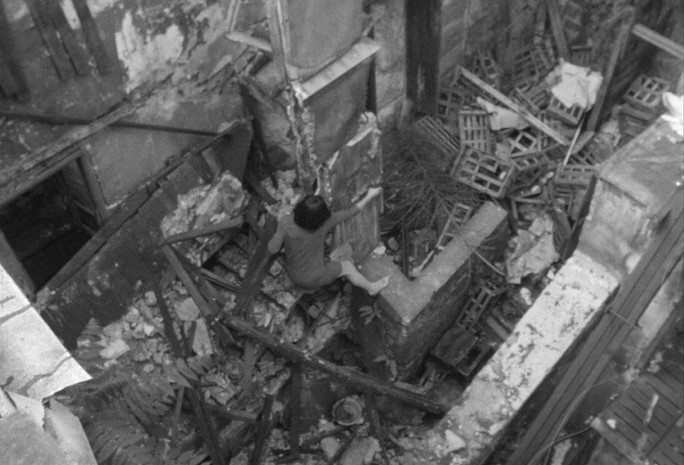
Much of the film is shot in a decrepit area of Paris and the striking photography captures it all beautifully. The camera moves through narrow apartment hallways and alleyways and one can see every crack in the wall and loose brick about to fall. By the time the pursuit reaches its climax and Louis has gone into survival mode, there are truly remarkable images of the character scampering through buildings that are literally falling apart (mirroring his mental state).
And there is even some impressive staging in the murders themselves. One memorable scene involving a prostitute is shot from below the characters. There is no mattress visible, only Louis and his victim moving on painful looking boxspring. The shot makes an impact on the viewer. Made on-the-fly, the movie certainly has its share of issues, but definitely displays raw talent and impressively captures decaying neighborhoods in Paris during the era. In many respects, it feels like an honest depiction of a troubled soul. This is a unique effort and it really is too bad that it couldn’t find a brave distributor who would release it.
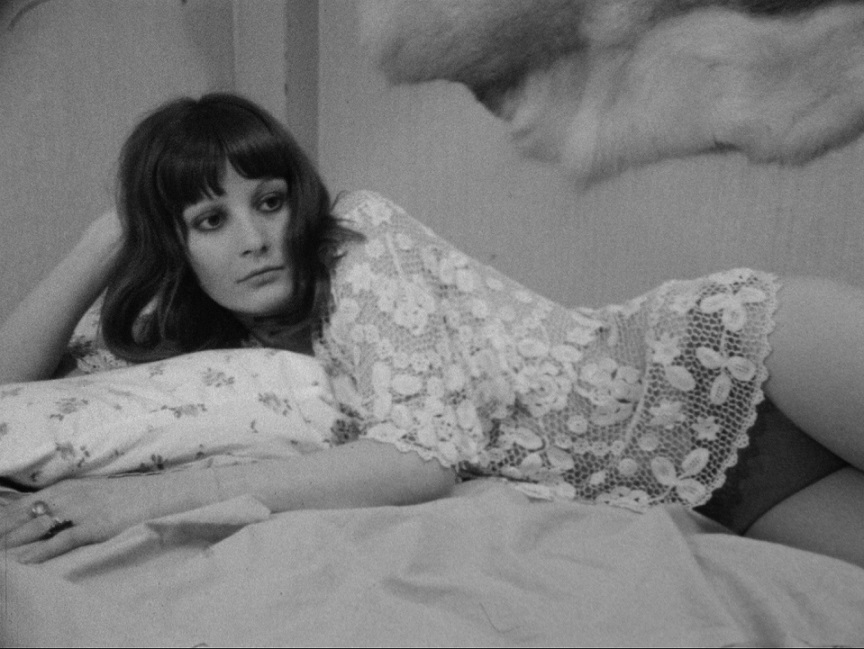
The image has been restored in 2K from its original 16mm elements. It was shot on reversible black-and-white stock, meaning there is no negative and this is likely as good as the film will ever look. Thankfully, it is a sharp, impressive picture and the eye-popping background environments stand out. Film critic Virginie Sélavy introduces the film and helps give information about the production. She joins movie expert Kat Ellinger and the two dissect the movie. Their track is an interesting listen and is filled with tidbits about the production. The two also point out some of the strange contradictions present within the story, also noting how a few elements were ahead of the curve (female lead Solange is by far the most competent detective in the film).
Additionally, the disc contains an extended interview with Jean-Denis Bonan and details his unusual experiences in cinema. He tells his own story and the frustrations experienced during his career, while his cinematographer, editor, music composer and star detail their memories shooting the movie. Bonan’s firsthand recollections and intentions are excellent to hear and help gain an understanding of his work and what he was attempting to accomplish.
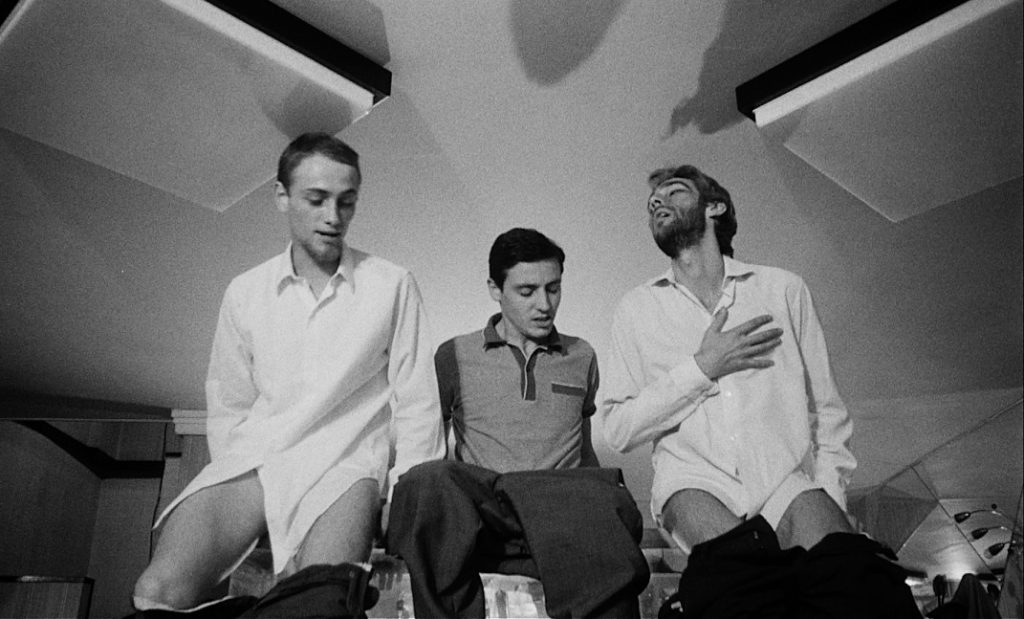
Another great extra is the Bonan shorts. Included are many of his projects from this era, including an unfinished short with a director commentary detailing what was supposed to have occurred in it. But the highlight is the inclusion of his banned short, Tristesses des anthropophages, which hasn’t been seen in decades. It’s a darkly humorous effort pushing elements to the extreme and taking shots at the establishment, who punish anyone choosing to live their life differently from the norm. And the element that offended censors? It involves the general public going to a popular restaurant, paying for and consuming meals made of human excrement. The bit is actually handled by the filmmaker in a devious and comical way (and, of course, it’s all staged), but was too much for censors at the time.
It’s wonderful that Radiance Films is finding lost projects and rescuing them. This title (and the accompanying shorts) could easily have disappeared forever, but they have now been salvaged for another generation or two to watch and appreciate. The picture has been transferred to Blu-ray with care and the extras help inform and allow viewers to understand the cultural movement that the film was a part of. If you enjoy cinematic obscurities from around the world and movies that pushed buttons back in the day (and probably still would, even now), it’s worth your while to track down A Woman Kills. Radiance Films have delivered an impressive disc.


